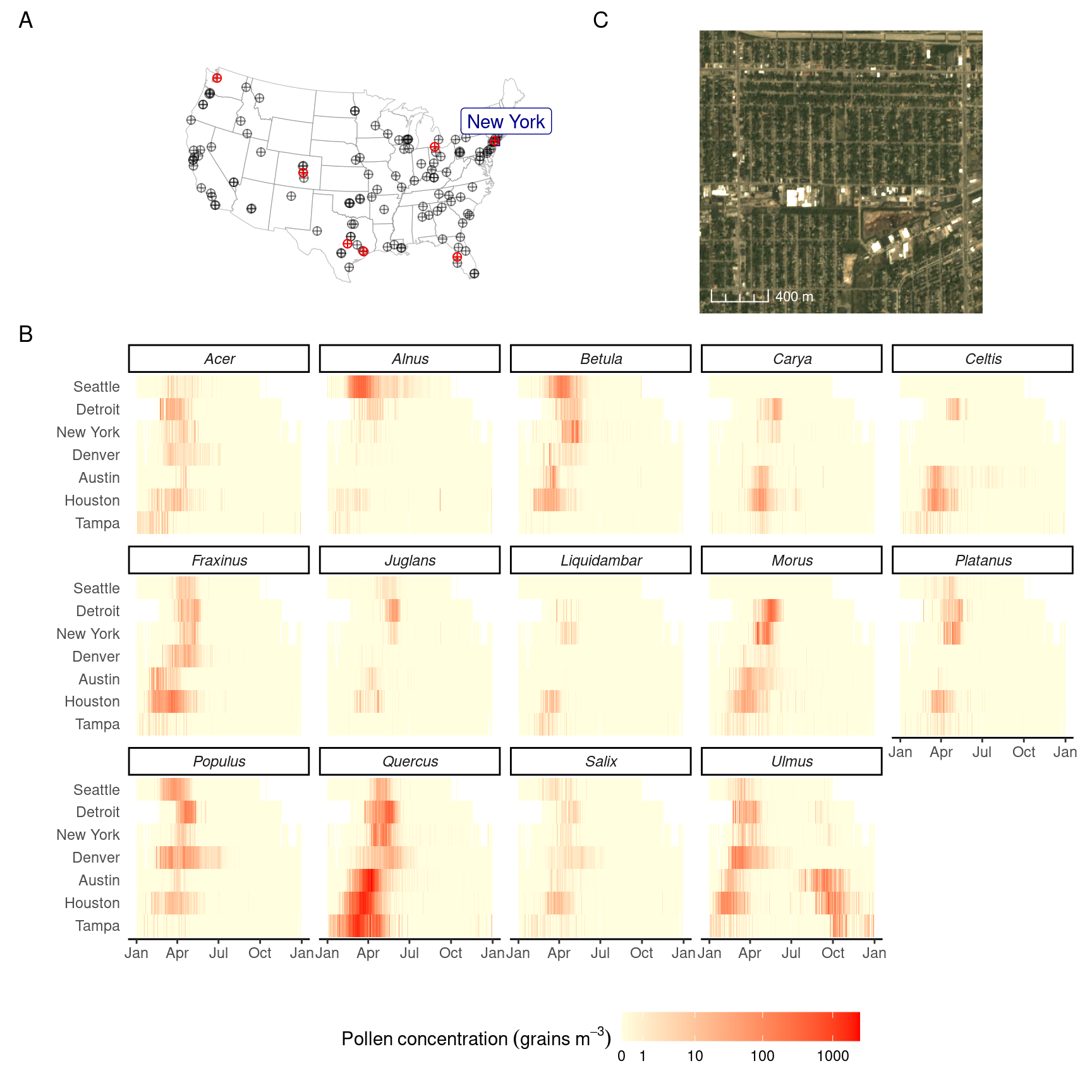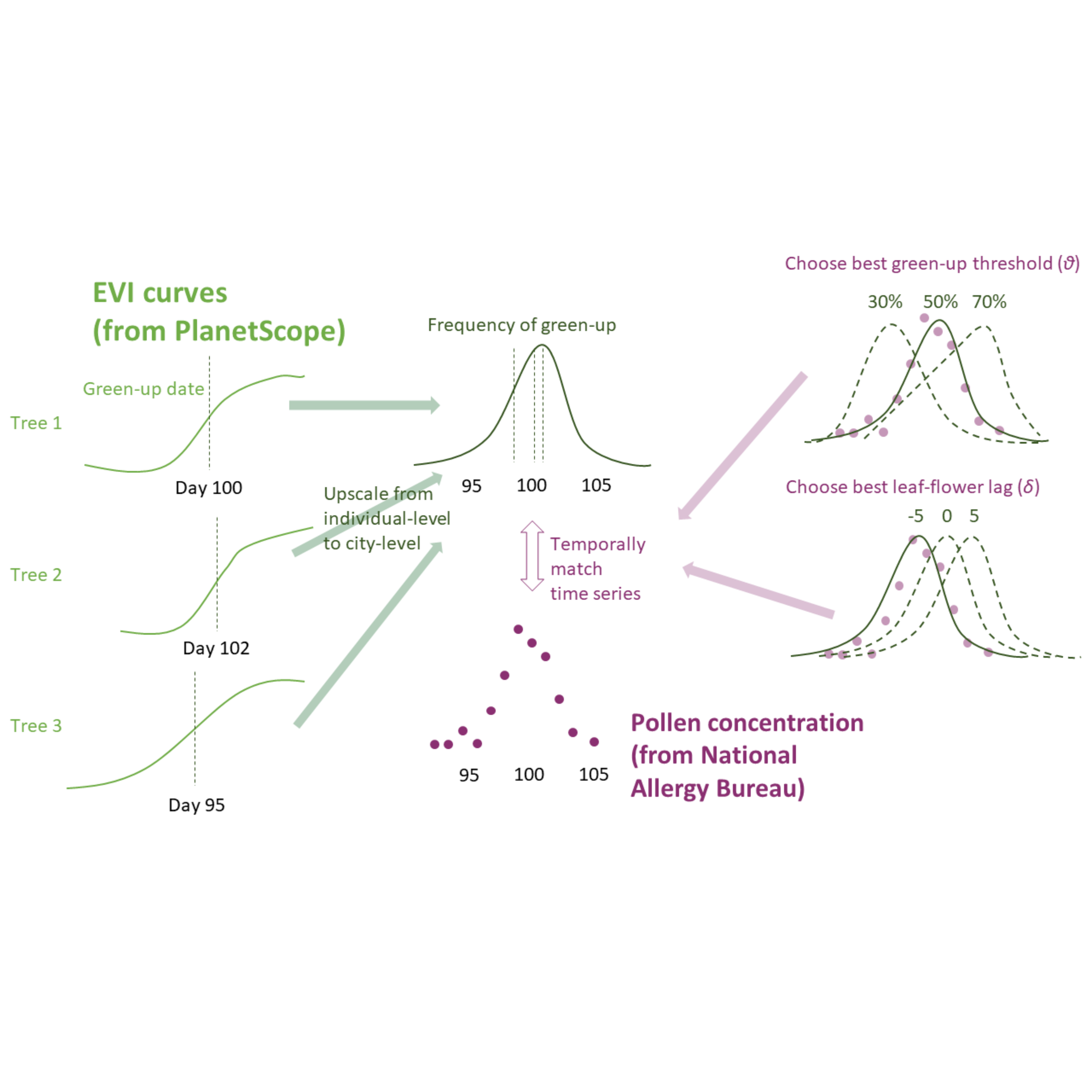5 Manuscript display items
5.1 NEON

Figure 5.1: Individual phenological observations extracted from PlanetScope (PS) and National Ecological Observatory Network (NEON) for wind-pollinated taxa. (A) Extraction of individual-level phenological metric from PS data, showing Enhanced Vegetation Index (black point), smoothed Enhanced Vegetation Index (green line), period of green-up (green shade), and extracted 50% green-up time (vertical green line), using two individuals at HARV and ORNL sites as examples. (B) Correlation between time of 50% green-up from PS and time of flower onset from NEON.
5.2 Urban data
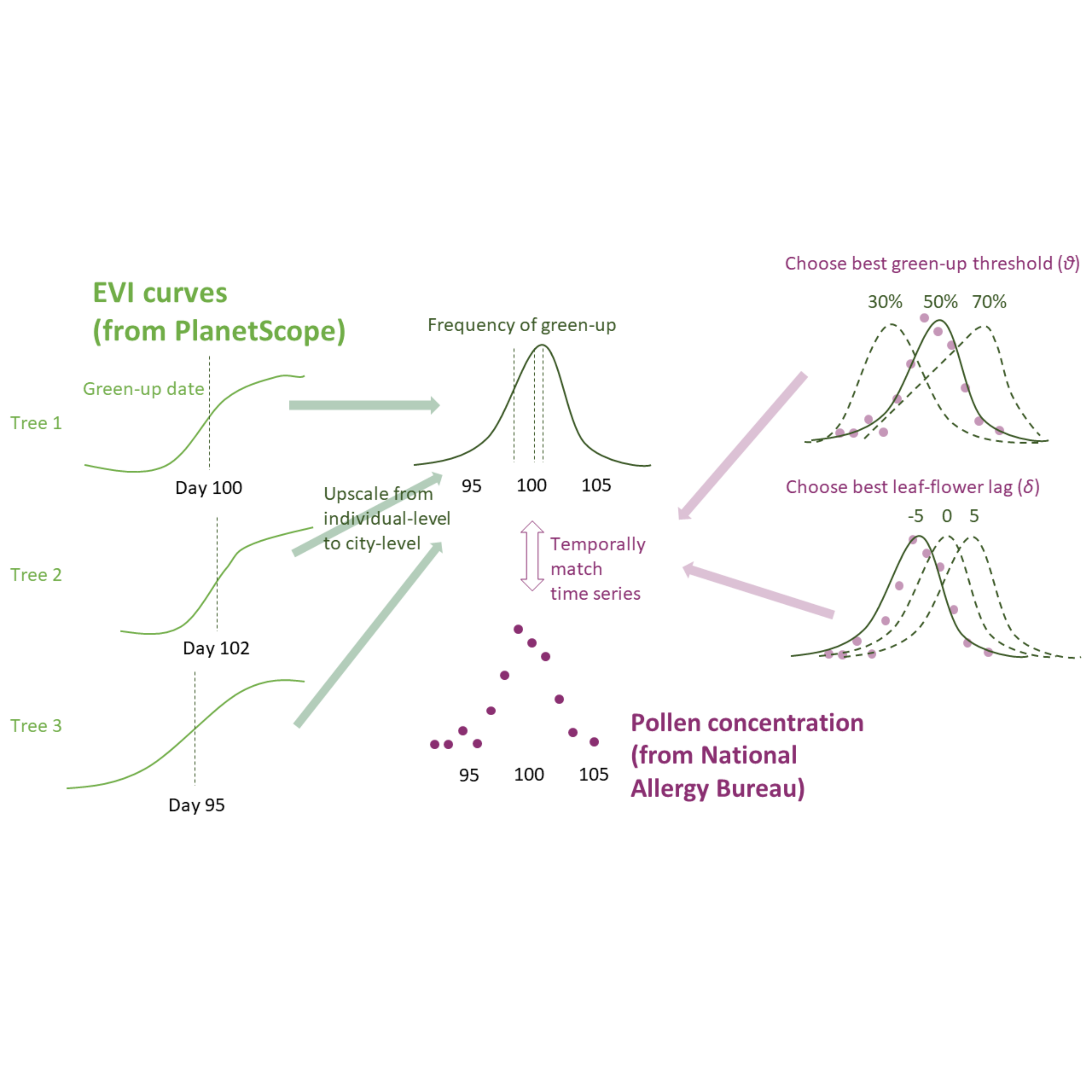
Figure 5.2: Pollen count and plant occurrence data. (A) Map of pollen counting stations associated with the National Allergy Bureau (NAB) and plant records near selected pollen counting stations. All pollen counting stations are marked in crossed circles, with ten selected stations in this study highlighted in red. Plant occurrence data from street tree inventory, land cover classification, and crowdsourcing are marked in blue points. (B) Pollen phenology of eleven key pollen-producing taxa in ten selected stations. (C) Spatial distribution of pollen-producing plants at ten study sites. Basemap show streets in cities. For simplicity, random 200 plants are visualized for each site.
5.3 Urban methodology
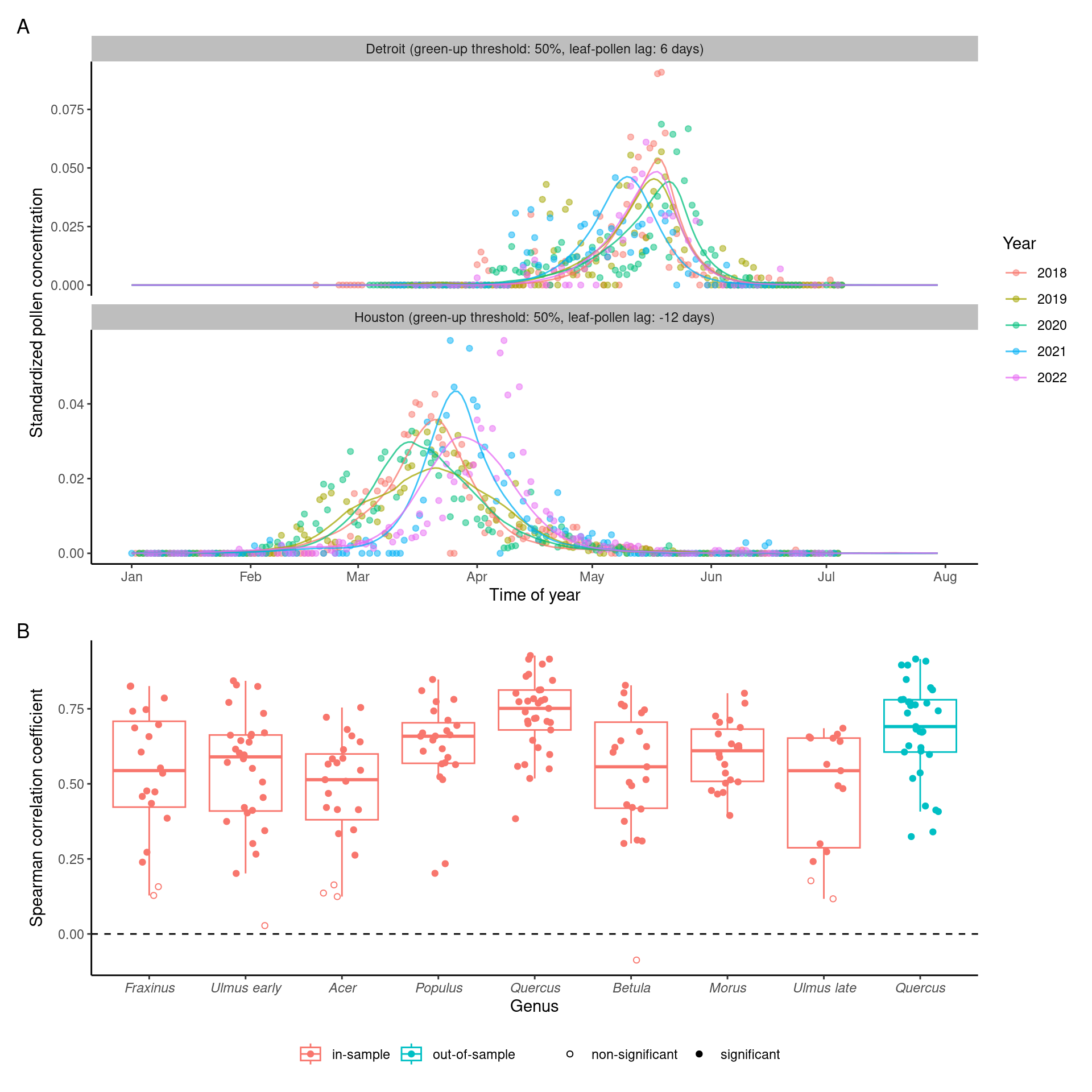
Figure 5.3: Approach for detecting pollen phenology from remotely-sensed leafing phenology. Enhanced vegetation index (EVI) time series of individual trees are used to determine green-up/down days at various green-up/down thresholds. The green-up/down days were then summarized to the site level as green-up/down frequencies. The green-up/down frequencies were compared with time series of pollen count (squareroot-transformed). For each taxa and across all sites, the green-up/down threshold that lead to the best match in the shapes of leafing and pollen phenology curves was chosen. For each site specifically, the best lag between leafing and pollen phenology curves were chosen.
5.4 Urban results
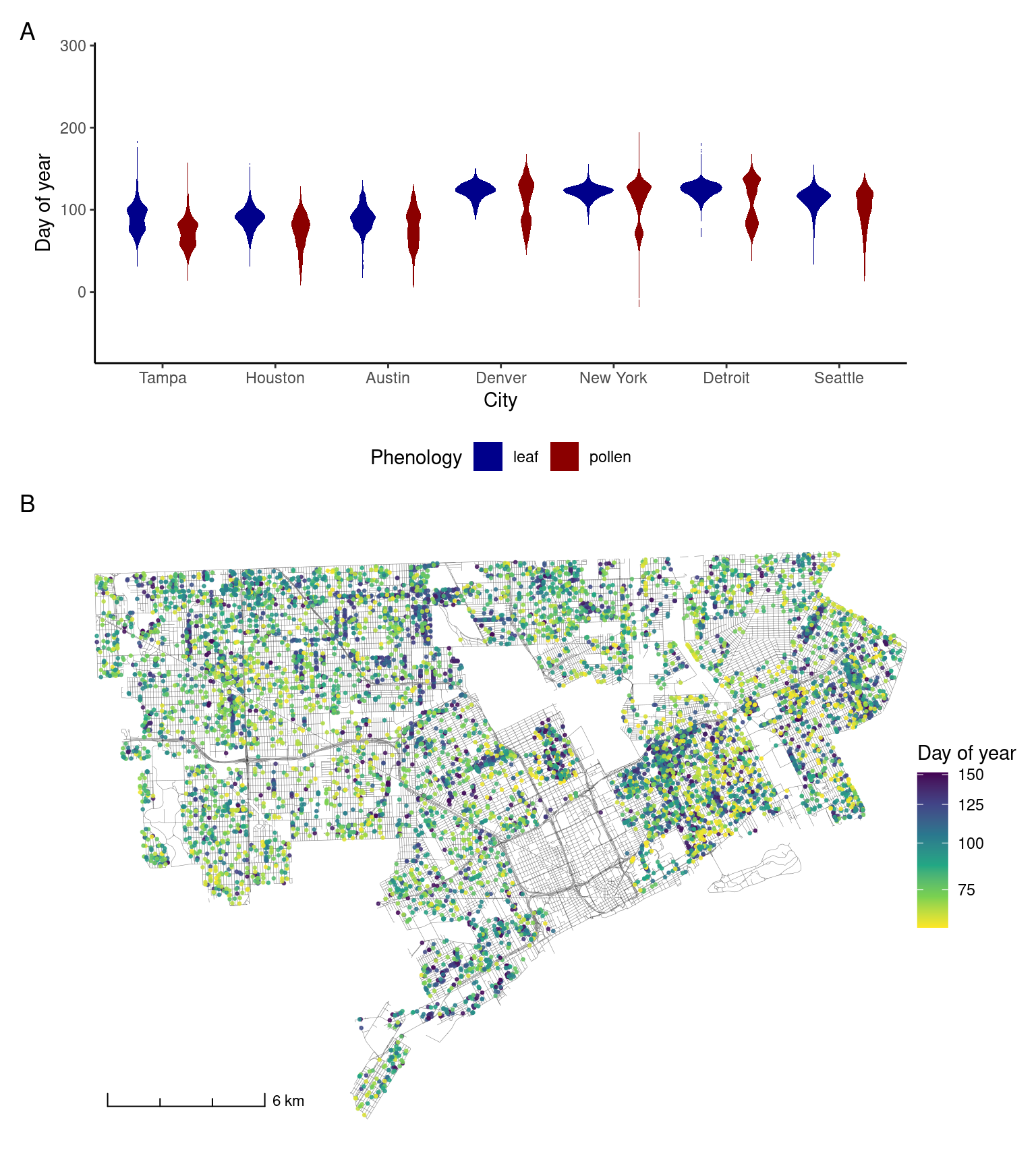
Figure 5.4: Comparing remotely-sensed pollen phenology from PlanetScope and site-level pollen phenology from aerial sampling. (A) Pollen phenology inferred from remotely-sensed leafing phenology tuned to the optimal green-up/down thresholds and leafing-pollen lags (lines) compared to pollen phenology inferred from airborne pollen concentration (points). Pollen phenology from both data sources was converted to probability density within each site year for comparison. Here we show examples of oak (Quercus spp.) pollen phenology at two sites on the south (Houston) and north (Detroit) of CONUS. (B) Accuracy of inferring pollen phenology across taxa measured with Spearman correlation coefficient, in-sample (fitting model with data from all sites) and out-of-sample (leave-one-out cross-validation).
